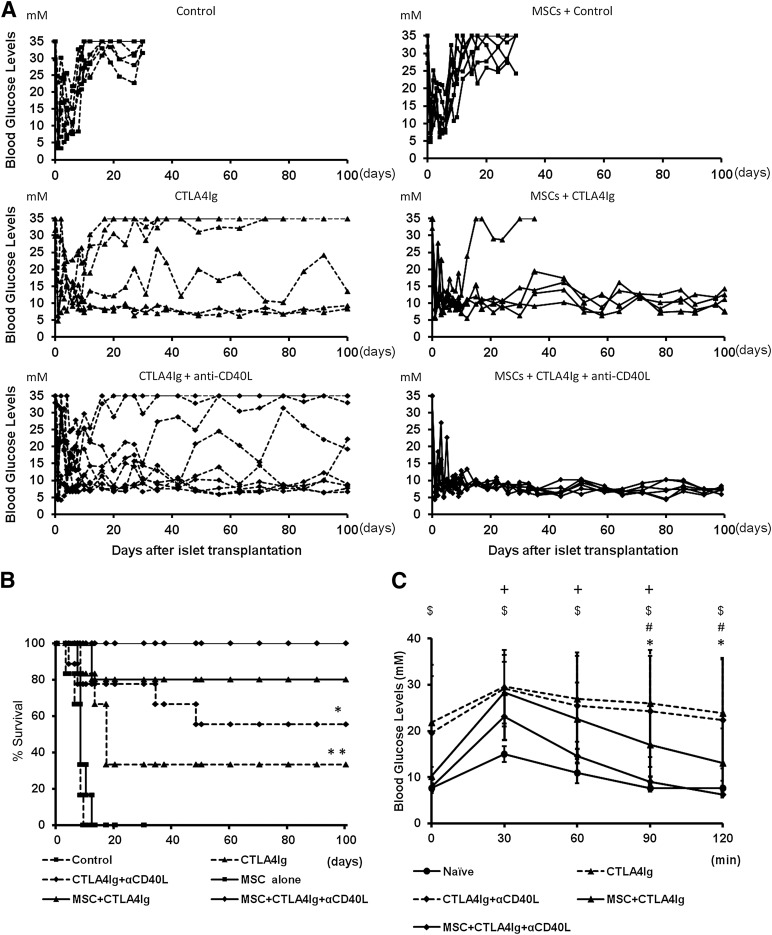Figure 1.
Islet allograft survival and function. (A): Eight- to 12-week-old diabetic C57BL/6 mice received 250 islets from fully major histocompatibility complex-mismatched Balb/c donors by portal vein injection. Recipients were randomized to cotransplantation with 2.5 × 105 MSCs originating from recipient bone marrow and treatment with CTLA4Ig only or CTLA4Ig and anti-CD40L or isotype control antibodies. Graft survival was followed by studying the fasting blood glucose levels. Blood glucose levels higher than 20 mM on more than 2 consecutive days was considered rejection. (B): Percentage of graft survival. Differences between groups were tested using log-rank statistics. ∗, p < .05: MSC + CTLA4Ig + anti-CD40L vs. CTLA4Ig + anti-CD40L; ∗∗, p < .05: MSC + CTLA4Ig + anti-CD40L vs. CTLA4Ig. (C): Intraperitoneal glucose tolerance test was performed 4 weeks after transplantation. Nontransplanted age-matched C57BL/6 naïve mice were tested simultaneously. Data are shown as mean ± SD. ∗, p < .05: MSC + CTLA4Ig + anti-CD40L vs. CTLA4Ig + anti-CD40L; #, p < .05: MSC + CTLA4Ig + anti-CD40L vs. CTLA4Ig; $, p < .05: naïve vs. CTLA4Ig; +, p < .05: naïve vs. CTLA4Ig + anti-CD40L. Statistical analysis was performed by analysis of variance with the Tukey-Kramer post hoc test, n = 5–9. Abbreviations: αCD40L, anti-CD40L; MSC, mesenchymal stromal cell.

